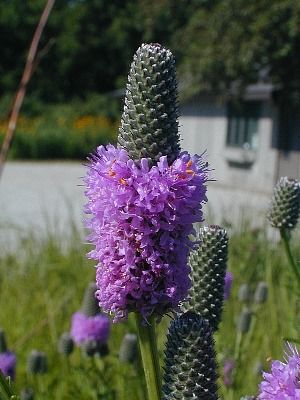Tip Sheet for Native Prairie Establishment from Seed
All native seed mixes establish best if planted on areas that have no green vegetation at time of seeding. You can cover a small area with black plastic for about two months between late fall and spring to kill existing vegetation without the use of chemical herbicides, but plants that do not actively grow at this time may not be killed. Herbiciding with glyphosate gives more dependable results, especially if two applications are used. The area should have four to six inches of active growth so spring and fall are best.

If there is a layer of dead thatch over most of the seedbed, the area should be burned or mowed and raked so the seed will be able to make contact with the soil. Pressing the seeds into the surface is acceptable, but covering them will reduce germination rate. The best time to apply native wildflower seed is late November to mid February; native grass seed can be planted in early spring until mid-May.
Native wildflowers and grasses usually require no fertilizer to establish, however Critsite does endorse use of soil conditioners and inoculants for best results. Critsite recommends the use of five bulk pounds of granular mycorrhizae in the no-till drill mixed direct with the seed when performing large acreage prairie restorations. We also use this rate in some of our seed production fields. This puts the inoculum in the ground with the seed at the lowest rate of usage. The product can be applied any time of the year.
Wildflowers and grasses planted from seed spend the first year, and sometimes three or more years, sinking their extensive root systems into the soil. For this reason, you might not see a lot of top growth right away when starting from seed. Be patient. These large root systems are what sustain the plants through drought and harsh winters. If you are seeking quicker results, consider using deep cell native plugs or a combination of native plugs and seed.
